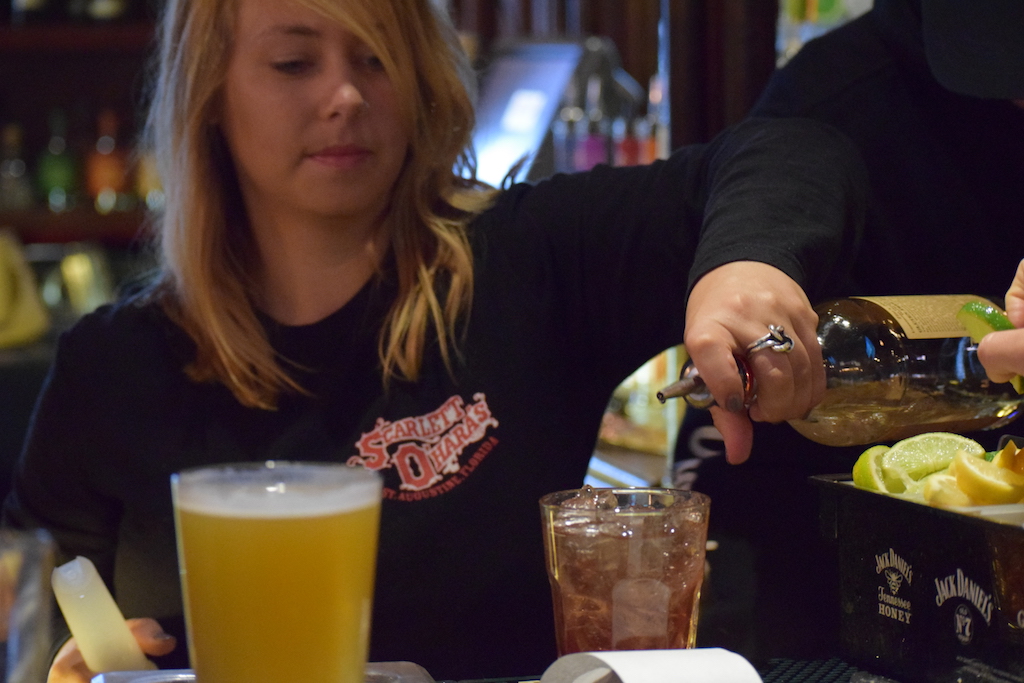By Courtney Cox | gargoyle@flagler.edu
To the underage drinker with the fake ID: your idea of a good time could mean the end of someone else’s livelihood.
Fake IDs are everywhere and unquestionably easy to come by. But with adolescents’ rising desires to start the party before it’s legal, the jobs of servers and bartenders are being put to the test.

In the hustle and bustle of a busy night at Scarlett O’Hara’s, bartender Kayti Lavicky, stays quick and confident in serving alcohol. Photo: Courtney Cox
The consequences of serving a minor can be harmful to those working in the alcohol industry: from losing a job, going to jail, paying a large fine or to not getting hired anywhere else to serve again.
Kayti Lavicky, a 24-year-old bartender at Scarlett O’Hara’s in downtown St. Augustine, has seen the outcomes of what using a fake ID can do.
“One of my coworkers got in trouble a few years ago. He had to pay a lot of money to get out of it,” Lavicky said. “People don’t ever consider the position they put service industry employees in when they use fake ID’s.”
Lavicky also said that although the bouncers check IDs at the door, they are not the ones facing any of the repercussions, it’s the person who serves the alcohol.

John Shermetaro, the regional manager of Regulatory Compliance Services, shows restaurant employees what to look for on a fake ID. Photo: Courtney Cox
In the hopes that restaurants and their employees can better depict a fake ID from a real one, there are alcohol training classes like the responsible vendor training taught by John Shermetaro, the regional manager of Regulatory Compliance Services.
Shermetaro said that he uses a lot of real life examples in his training because it shows just how much alcohol service can affect somebody’s life.
“There’s a lot of liability out there with what they’re doing. Yes, two or three drinks may look like two or three drinks, but it can have some pretty severe dramatic impacts on not only the employees life, but on the business and other people surrounding that person,” Shermetaro said.
Lavicky and other restaurant service employees attend Shermetaro’s training to better themselves in preparations for fake ID scenarios. Shermetaro said that as technology improves in fake IDs, it will be important for bars and restaurants to stay ahead of that.
Although Lavicky said that she understands kids want to have fun, she wishes that in the meantime minors would stick to house parties rather than risk her own job.
“When you’re young, you’re not really thinking about other people as much as you want to go out and have fun, but you know wait another year, wait two years (until legal),” Lavicky said.
And to the underage drinker with the fake ID: “This is how we make money. You’re threatening how we make a living,” Lavicky said.



Be the first to comment on "Fake IDs putting St. Augustine bars to the test"